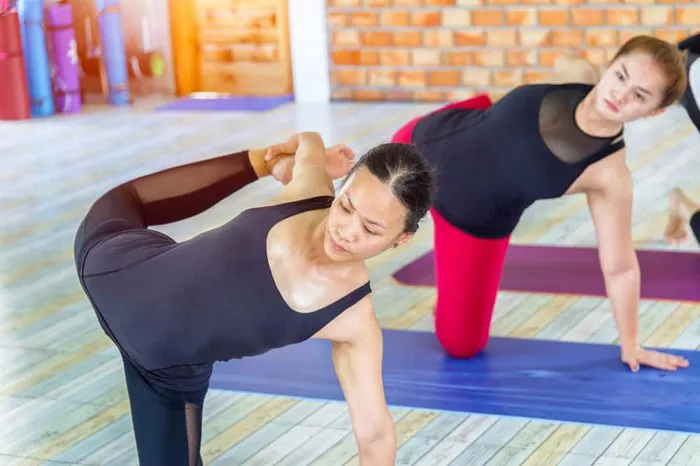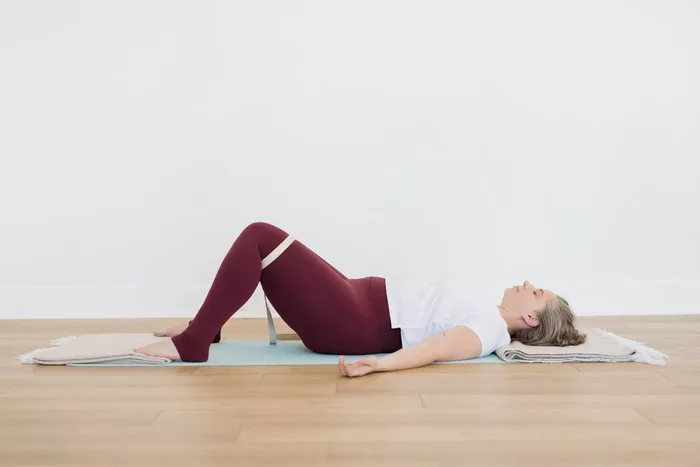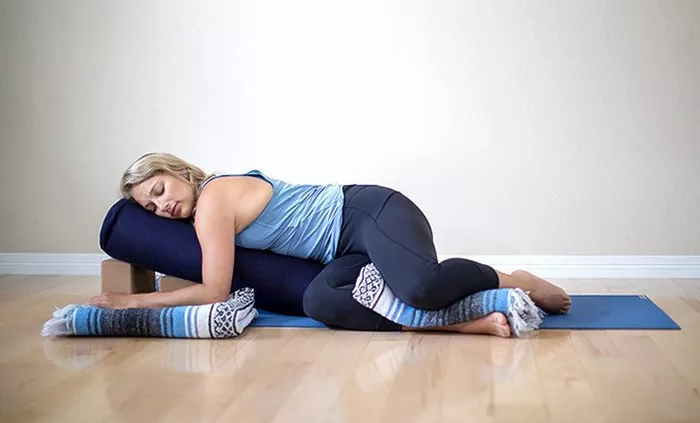Yoga, in its many forms, offers a holistic approach to well-being, encompassing physical postures (asanas), breathing exercises (pranayama), and deep philosophical teachings. Among the various paths of yoga, Jnana Yoga stands out as the path of wisdom, knowledge, and self-realization. Rooted in ancient Indian philosophy, Jnana Yoga focuses on understanding the true nature of reality and one’s own essence through deep introspection and conscious thought. This path of yoga is often seen as the most intellectual and contemplative, requiring both discipline and discernment to navigate its teachings.
In this article, we will explore what Jnana Yoga is, its historical roots, key concepts, the practices involved, and how it can be applied in modern life. We will also address how Jnana Yoga contrasts with other types of yoga and the benefits one can experience through its practice.
Understanding Jnana Yoga
The term Jnana Yoga comes from two Sanskrit words: “Jnana” meaning knowledge or wisdom, and “Yoga,” meaning union or discipline. Thus, Jnana Yoga is often referred to as the path of knowledge or the path of wisdom. It is considered one of the four classical paths of yoga, alongside Bhakti Yoga (the path of devotion), Karma Yoga (the path of selfless action), and Raja Yoga (the path of meditation and control of the mind).
Jnana Yoga’s primary goal is the realization of the self’s true nature. This involves understanding the difference between the finite self (our ego or individual identity) and the infinite self (the universal consciousness or supreme reality). Through Jnana Yoga, a practitioner seeks to transcend the illusion of separateness and realize the oneness with the universe.
The Philosophical Foundations of Jnana Yoga
To truly understand Jnana Yoga, one must first look into the philosophical framework it draws upon, primarily the Vedantic tradition. Vedanta is one of the six orthodox schools of Hindu philosophy, and it is based on the teachings found in the Upanishads, which are ancient texts that explore the nature of reality, the self, and the ultimate truth (Brahman).
1. The Concept of Brahman and Atman
In Vedanta, the ultimate reality is referred to as Brahman, an infinite, formless, and eternal consciousness that pervades all existence. Everything in the universe is an expression of Brahman. According to Vedantic teachings, the true self, or Atman, is not different from Brahman. Atman is the essence of an individual, which is essentially the same as the supreme, universal consciousness.
The practice of Jnana Yoga involves realizing the identity of Atman (the self) and Brahman (the ultimate reality). This is captured in the famous Vedantic saying, “Tat tvam asi” – “You are That.” In other words, the ultimate goal is to awaken to the truth that the self is not separate from the universal consciousness but is one with it.
2. Maya – The Illusion of Separation
One of the key concepts in Jnana Yoga is Maya, which refers to the illusory nature of the world. Maya is the veil of illusion that distorts our perception of reality and creates the belief in duality and separation. Our minds and senses, which perceive the world as separate and diverse, are influenced by Maya, and as a result, we live in ignorance of our true nature.
Jnana Yoga aims to pierce through this illusion by cultivating self-inquiry and discerning the true nature of existence. When the veil of Maya is lifted, the practitioner realizes that the world’s apparent diversity is not separate from the unity of Brahman.
Key Concepts in Jnana Yoga
In Jnana Yoga, knowledge is not just intellectual understanding, but a deep, experiential realization of truth. To achieve this, a practitioner must engage in specific mental disciplines that are designed to cultivate wisdom and eliminate ignorance. Here are some key concepts integral to the practice of Jnana Yoga:
1. Neti Neti – “Not This, Not This”
A central practice in Jnana Yoga is the use of the Neti Neti method. This Sanskrit phrase means “Not this, not this,” and is used to negate all limited or finite identities. It is an approach to understanding what we are not in order to realize what we truly are.
For example, a practitioner might reflect, “I am not the body, I am not the mind, I am not my thoughts,” and continue this process until they reach a realization of the self beyond these transient forms. This helps to detach from the ego and direct attention to the eternal, unchanging essence within.
2. Self-Inquiry (Atma Vichara)
Self-inquiry, or Atma Vichara, is the practice of asking deep, introspective questions such as, “Who am I?” and “What is the nature of this ‘I’ that I identify with?” The aim is to move beyond the superficial sense of self and realize that the “I” is not the body, the thoughts, or emotions, but the witness consciousness behind them.
This practice was famously advocated by the Indian sage Ramana Maharshi, who taught that by continually asking, “Who am I?” one can peel away the layers of ignorance and realize the true nature of the self. The practice is often done in meditation or silent contemplation.
3. Viveka – Discrimination between the Real and the Unreal
Viveka, or discrimination, is the ability to discern what is real from what is unreal, eternal from transient, and pure consciousness from the ego-mind. In Jnana Yoga, developing Viveka is crucial because it enables the practitioner to see beyond the superficial layers of perception and experience the deeper truths of existence.
Viveka helps in distinguishing between the Atman (the eternal self) and the ego (the limited individual identity). Through this discrimination, the practitioner begins to experience the world not as a collection of separate, unrelated objects, but as an interconnected expression of the one universal reality.
4. Vairagya – Renunciation and Detachment
Vairagya, or renunciation, refers to the detachment from material desires, sensory pleasures, and attachments that bind us to the world of illusion. In Jnana Yoga, Vairagya is not about physical renunciation, but rather an inner detachment from the fleeting experiences of life that distract us from the pursuit of self-realization.
Through Vairagya, the practitioner learns to detach from the ego’s desires and attachments, recognizing them as temporary and ultimately unsatisfying. This detachment does not lead to neglect of the world, but to a deep inner freedom from its hold on the mind.
Practices of Jnana Yoga
While Jnana Yoga is often associated with intellectual inquiry, it also involves specific practices designed to quiet the mind and facilitate self-realization. These practices include meditation, contemplation, and mindfulness.
1. Meditation (Dhyana)
Meditation is a core practice in Jnana Yoga. It allows the practitioner to quiet the mind, focus inwardly, and engage in deep self-inquiry. The goal of meditation in Jnana Yoga is not just to relax but to realize the nature of the self through sustained contemplation.
Through regular meditation, a practitioner can develop the mental clarity necessary to discern the true nature of the self. Meditation is often practiced in conjunction with Mantra chanting or silent reflection on the nature of the self, with the focus being on realizing the eternal truth of Brahman.
2. Study of Sacred Texts (Jnana Sravanam)
Another important practice in Jnana Yoga is the study of sacred texts, particularly the Upanishads, Bhagavad Gita, and other Vedantic literature. The teachings of these texts provide the intellectual framework for understanding the nature of the self and the universe.
In Jnana Yoga, it is not enough to simply read these texts; they must be contemplated deeply to unlock their hidden meanings. Jnana Sravanam, or listening to the teachings, is often accompanied by discussion or guidance from a teacher (Guru) who helps interpret the deeper truths.
3. Contemplation (Manana)
Contemplation, or Manana, is the practice of reflecting deeply on the teachings of Jnana Yoga. It involves pondering the nature of the self, the universe, and the connection between them. Through contemplation, a practitioner internalizes the teachings and brings them into direct experience.
This practice helps to eliminate doubts and confusion, gradually leading the practitioner to a more profound realization of the truth.
Benefits of Jnana Yoga
The practice of Jnana Yoga offers numerous benefits, both in terms of spiritual growth and practical living.
1. Self-Realization
The ultimate goal of Jnana Yoga is to attain self-realization, which is the direct experience of one’s true nature. This realization brings an end to the illusion of separateness and the ego’s limitations, leading to a deep sense of inner peace, joy, and liberation.
2. Mental Clarity and Focus
Through the practices of self-inquiry and meditation, Jnana Yoga cultivates sharp mental clarity. It helps to quiet the restless mind, making it easier to focus on the present moment and discern what is truly important in life.
3. Emotional Balance
As the practitioner gains wisdom and detaches from the ego and material attachments, emotional stability and resilience are enhanced. The realization of oneness with all beings leads to greater compassion and a more balanced emotional state.
4. Freedom from Fear and Anxiety
One of the major sources of fear and anxiety is the identification with the ego and the fear of loss. Jnana Yoga dispels these fears by revealing the true, eternal self, which is beyond birth and death, change and decay.
Conclusion
Jnana Yoga is a profound and transformative path that leads to the realization of the true self through wisdom, self-inquiry, and meditation. Unlike other paths of yoga, which may focus on physical discipline or devotional practices, Jnana Yoga emphasizes intellectual and spiritual wisdom as the means to enlightenment. It invites practitioners to move beyond the surface-level identities and recognize the oneness of existence, transcending the illusion of separateness.
For those on the journey of spiritual awakening, Jnana Yoga offers the possibility of lasting peace, liberation, and a deep connection to the universal consciousness that pervades all of existence. By embracing self-inquiry, study, and contemplation, the seeker can begin to dissolve the veils of ignorance and step into the light of true knowledge.
Related Topics:




















